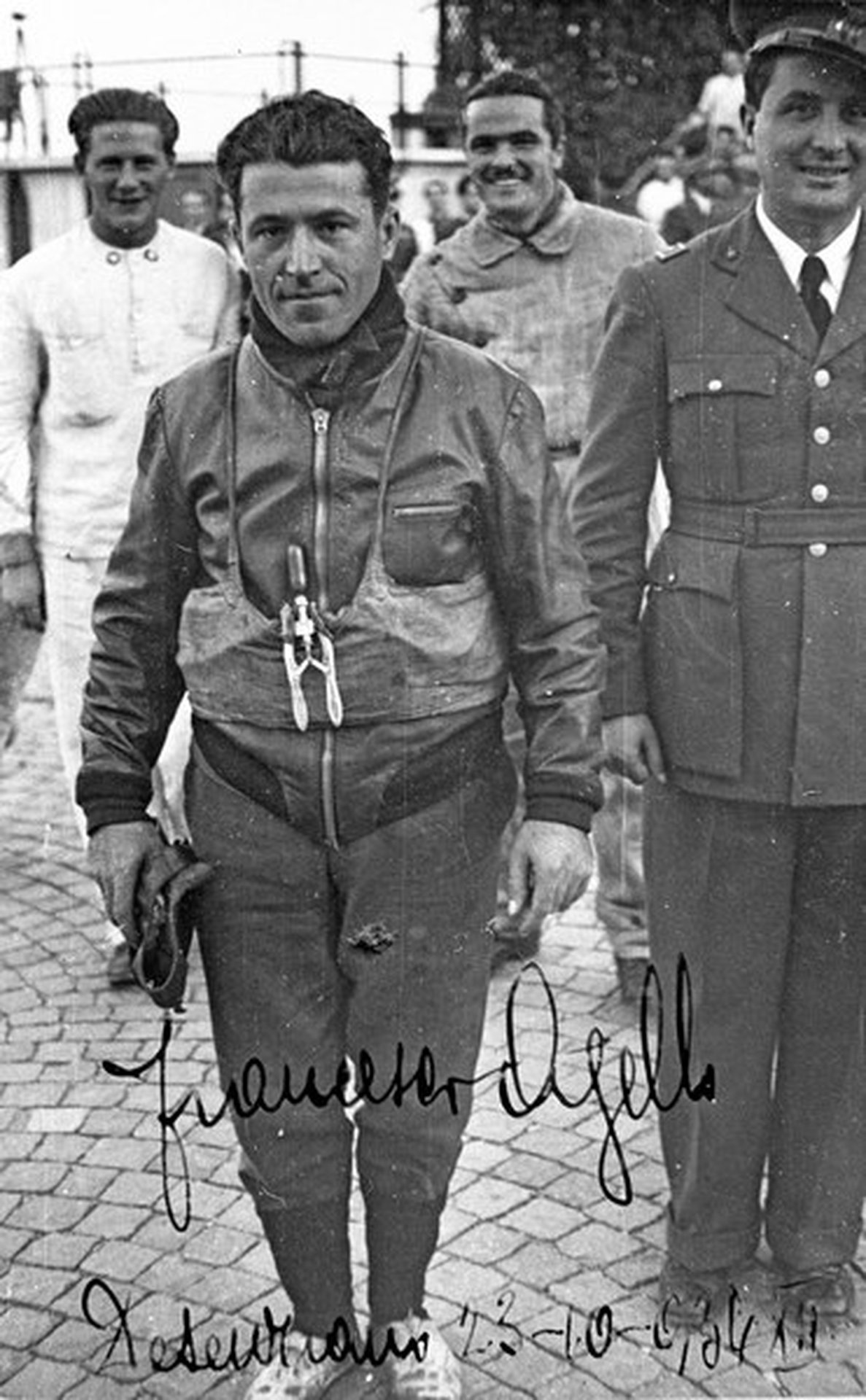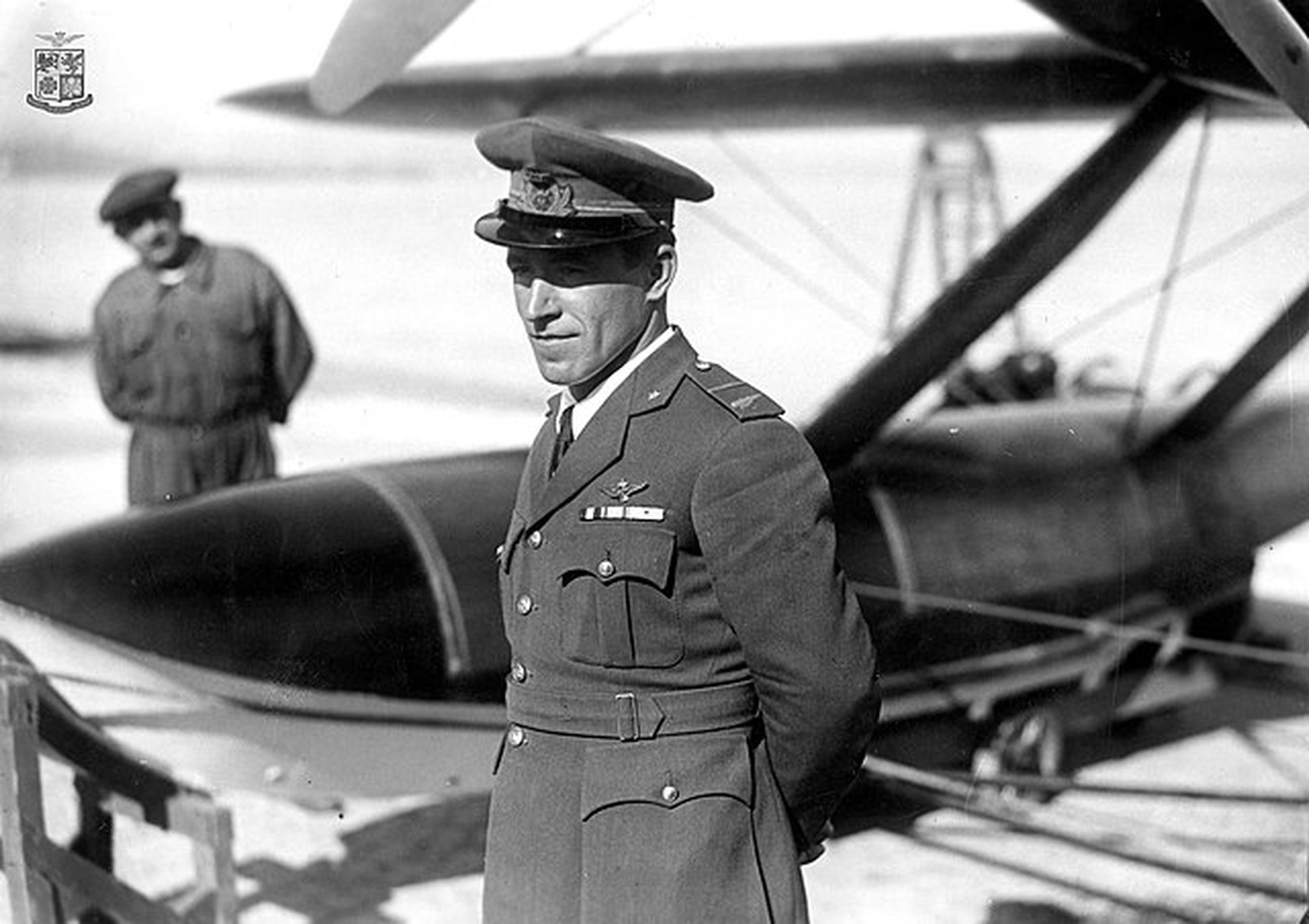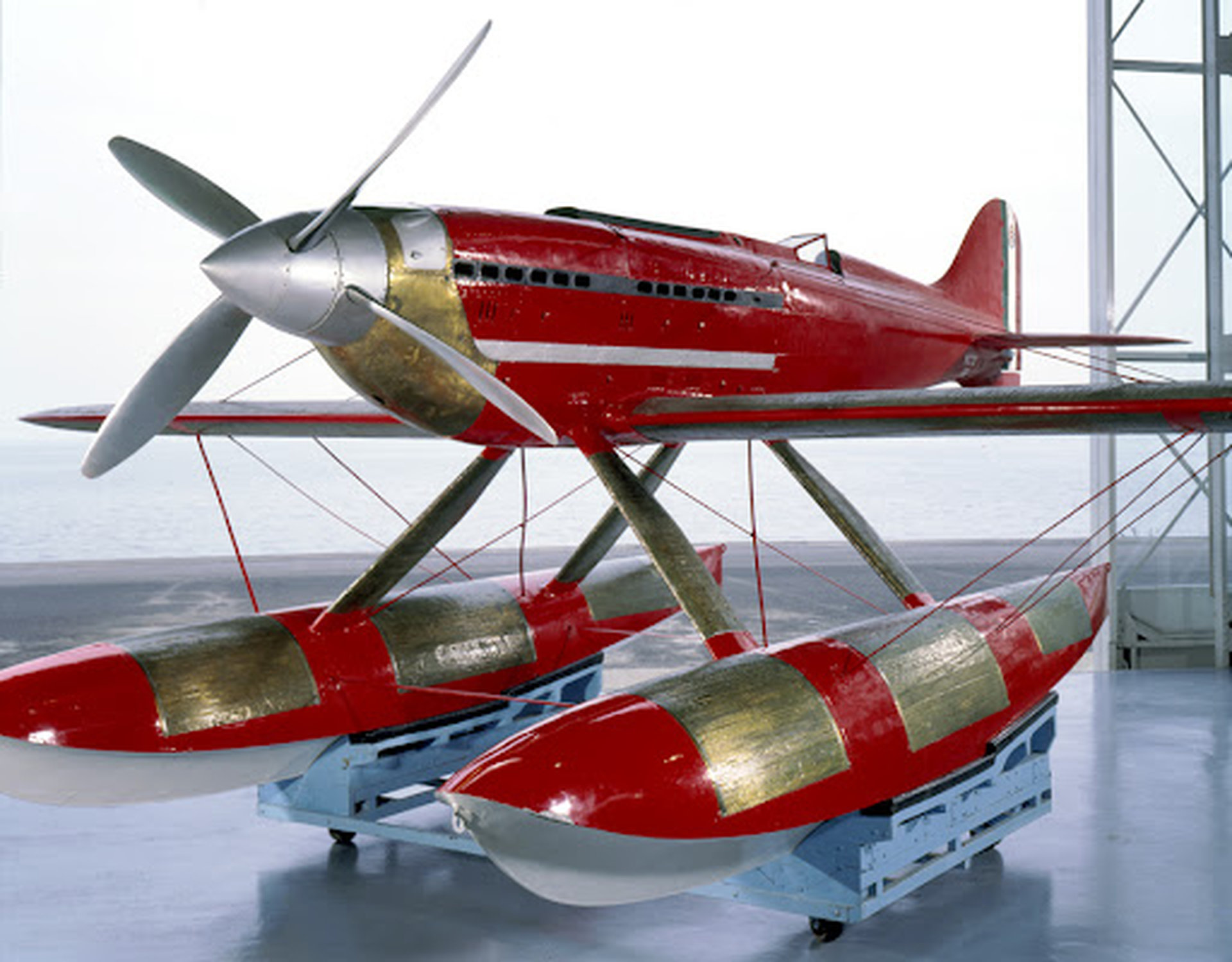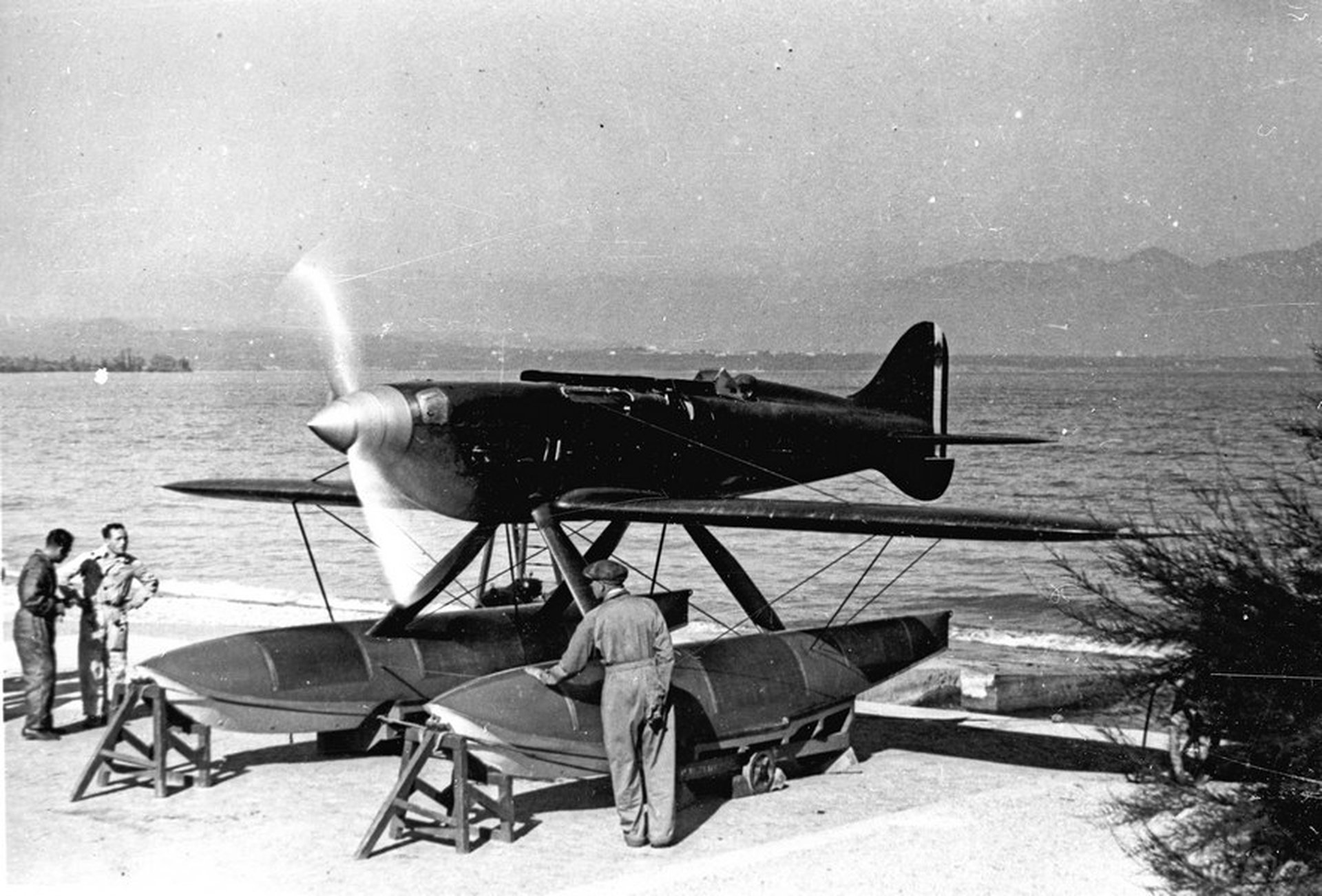Tony’s Scrapbook: Francesco Agello
Did you have a particular aviation hero that you idolized when you were growing up? Someone you looked up to and thought, someday I would like to follow in their footsteps. I have a couple, but for me, it started within the pages of a comic book. Like all little boys in the 70s, Superman was my hero, but I could never convince anyone to take me to The Daily Planet to meet Clark Kent.
All kidding aside, three names come to mind. Amelia Earhart, Charles Lindbergh, and Chuck Yeager, but if I had to choose one, it would be Mr. Yeager. You may ask why. Well, my mother, Ruth, worked at Bell Aircraft in the 1940s, and she told me about the X-1 that Chuck piloted to break the sound barrier on October 14, 1947. I’ll touch on her history at Bell, but I’ll save that for a future article.
My father’s hero was Francesco Agello. I’m not sure who his childhood hero was, but Agello is at the top of his list. He probably has a few favorite WWI Flying Aces, but I haven’t found that information yet.
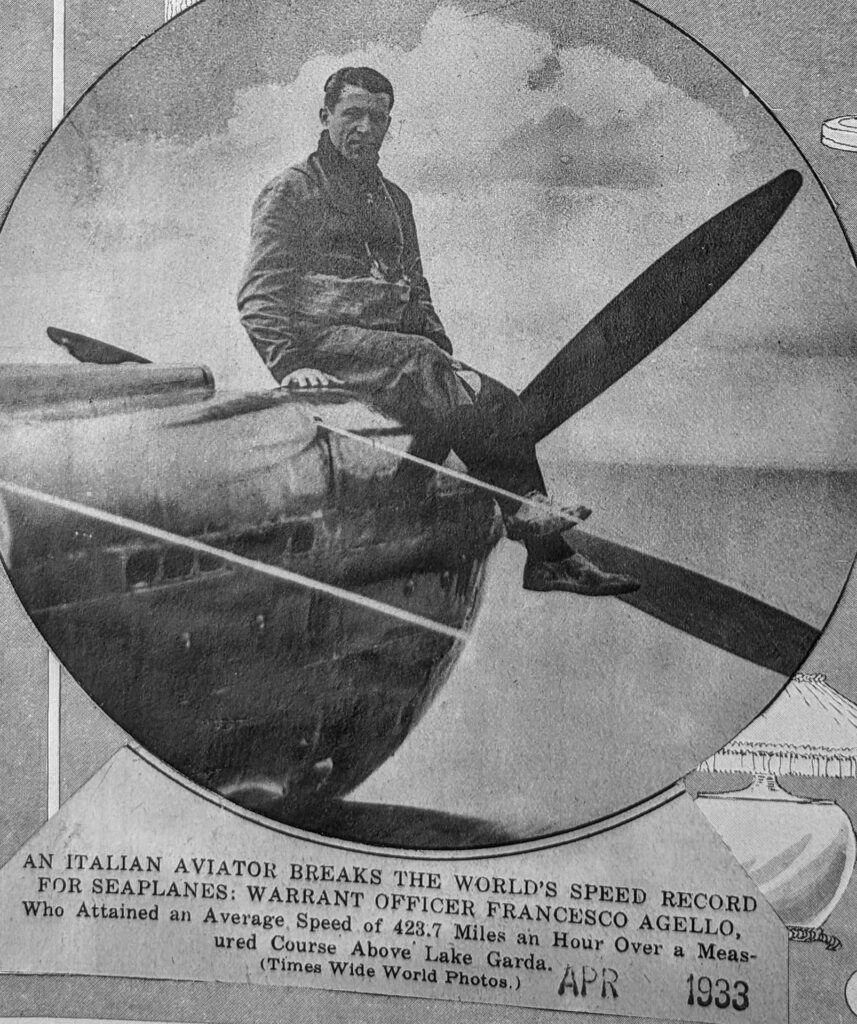
The above newspaper clipping from Tony’s scrapbook depicts Warrant Officer Francesco Agello, an Italian aviator who broke the world’s speed record for seaplanes in 1933. He achieved an average speed of 423.7 miles per hour over a measured course above Lake Garda. The photograph and its caption highlight this significant achievement in aviation history.
Francesco Agello was born on December 27, 1902, in Casalpusterlengo, a small town in the Lombardy region of Italy. Growing up in the early 20th century, Agello was captivated by the rapid advancements in aviation, a relatively new and thrilling field at the time. His passion for flight led him to pursue a career as a pilot, joining the Italian Air Force, where he began his journey into the annals of aviation history.
Agello’s early career in the Italian Air Force saw him develop his pilot skills. His talent and dedication quickly became evident, earning him recognition and paving the way for his involvement in high-speed flight projects. As aviation technology progressed, Italy sought to make its mark on the world stage by setting new speed records for aircraft, particularly in the competitive field of seaplanes.
Francesco Agello’s most significant contributions to aviation came through his work with the Macchi-Castoldi MC.72, an advanced seaplane designed by the renowned Italian aircraft designer Mario Castoldi. Macchi Aeronautica specifically built the MC. 72 to compete in the Schneider Trophy races, which were prestigious competitions aimed at advancing seaplane technology.
First World Speed Record (1933):
On April 10, 1933, Agello piloted the Macchi-Castoldi MC.72 and set a new world speed record for seaplanes by reaching an average speed of 682.078 km/h (423.834 mph) over a 3 km course above Lake Garda. This remarkable achievement brought international acclaim to both Agello and Italian aviation.
Second World Speed Record (1934):
Undeterred by his initial success, Agello continued pushing the speed boundaries. On October 23, 1934, he broke his record, achieving an astonishing speed of 709.209 km/h (440.682 mph) in the same MC.72. This record stood unchallenged for several years, marking the fastest speed ever attained by a piston-engine seaplane. The thrill of his flights continues to inspire aviators and enthusiasts alike.
Following his record-breaking achievements, Agello continued his aviation career, taking on roles that included training and instructional duties within the Italian Air Force. Despite the shift in focus, his passion for flight never waned.
Tragically, Francesco Agello’s life was cut short on November 24, 1942. During a training flight in a Macchi C.202 Folgore, a World War II-era fighter aircraft, he crashed near Desenzano del Garda, Italy. The exact circumstances of the accident remain unclear, but it marked the end of a brilliant career.
Francesco Agello will always be one of Italy’s most celebrated aviators. His record-setting flights in the Macchi-Castoldi MC.72 showcased the potential of high-speed seaplane technology. They demonstrated the skill and bravery of pilots willing to push the limits of what was possible. Agello’s enduring legacy continues to inspire future generations of aviators and engineers, reminding us of the heights that can be reached with determination and passion.
The surviving MC.72 is preserved and displayed at the Italian Air Force Museum in Vigna di Valle, serving as a testament to Agello’s legacy and the remarkable advancements in aviation during his time. His contributions to the field remain an essential part of aviation history, and his name is synonymous with the pursuit of speed and excellence in flight.
The Macchi-Castoldi MC.72 is a legendary aircraft known for its record-breaking speed and advanced engineering. Here are the critical details about this remarkable seaplane:
Design and Development:
- Designer: Mario Castoldi
- Manufacturer: Macchi Aeronautica, an Italian aircraft manufacturer
- Purpose: The MC.72 was designed specifically to compete in the Schneider Trophy, a prestigious event focused on seaplane racing.
- Configuration: The MC.72 is a single-seat, twin-float seaplane with a sleek, aerodynamic design optimized for high-speed flight.
Specifications:
- Length: 8.32 meters (27 feet 3.5 inches)
- Wingspan: 9.48 meters (31 feet 1.25 inches)
- Height: 3.30 meters (10 feet 10 inches)
- Empty Weight: 2,485 kg (5,478 pounds)
- Gross Weight: 2,784 kg (6,137 pounds)
Engine and Performance:
- Engine: The MC. 72’s power comes from a Fiat AS.6, liquid-cooled V24 engine. This engine was two Fiat AS.5 V12 engines mounted in tandem, producing 2,500 horsepower.
- Propulsion: The aircraft used contra-rotating propellers to counteract the torque effect of the powerful engine, improving stability and control.
- Top Speed: The MC.72 set a world speed record for seaplanes, reaching an incredible speed of 709.209 km/h (440.682 mph) on October 23, 1934, with Francesco Agello as the pilot.
Record-Breaking Achievements:
- First Record (1933): On April 10, 1933, Francesco Agello flew the MC.72 to 682.078 km/h (423.834 mph), setting a new world record.
- Second record (1934): Agello broke his record on October 23, 1934, achieving a speed of 709.209 km/h (440.682 mph). This record remained unchallenged for several years and is today the fastest speed a piston-engine seaplane has attained.
Legacy and Impact:
- Technological Advancements: The MC.72 showcased advanced aerodynamics, innovative engine design, and engineering solutions that influenced future aircraft development.
- Historical Significance: The achievements of the MC.72 and its pilot, Francesco Agello, brought international acclaim to Italian aviation and demonstrated the potential of high-speed flight. Their contributions stand as a testament to the ingenuity and determination of the Italian aviation industry, filling us with pride and admiration.
- Preservation: The surviving MC.72 is preserved and displayed at the Italian Air Force Museum in Vigna di Valle, Italy, where it remains a testament to the ingenuity and skill of its designers and pilots.
The Macchi-Castoldi MC.72 is one of aviation’s most iconic and successful racing seaplanes. Its record-breaking performance continues as a pinnacle of engineering excellence.
Francesco Agello’s legacy is primarily defined by his record-breaking achievements in the Macchi-Castoldi MC.72, overshadowing other aspects of his career. However, some notable anecdotes and additional details about his life and experiences add depth to his story.
The Development of the MC.72
- Collaborative Effort: The development of the MC.72 was a significant team effort. Agello worked closely with designer Mario Castoldi and other engineers and technicians. Their collaboration was critical in overcoming numerous technical challenges, including engine overheating and stability issues. Agello’s feedback as a test pilot was invaluable in refining the aircraft’s design.
The Schneider Trophy
- Competition and Ambition: While Macchi Aeronautica initially built the MC.72 to compete in the Schneider Trophy races, the aircraft faced numerous delays and mechanical issues, preventing it from competing in the 1931 and 1933 races. Despite these setbacks, Agello’s flights aimed to demonstrate the aircraft’s capabilities and Italy’s ambition in high-speed aviation.
Personal Courage and Determination
- Risk and Reward: Agello’s flights in the MC.72 were not without risk. High-speed flight at the time was fraught with danger due to the limitations of technology and the extreme conditions pilots faced. Agello’s willingness to push the boundaries of what was possible showcased his courage and determination. His successful flights were a testament to his skill and bravery as a pilot.
Influence on Future Aviation
- Inspiration for Future Pilots: Agello’s achievements inspired a generation of Italian pilots and engineers. His record-breaking speeds and the technological advancements demonstrated by the MC.72 influenced future designs and encouraged further innovation in aviation.
Honors and Recognition
- Posthumous Recognition: After his death, Agello was honored for his contributions to aviation. To mark his legacy, various memorials and commemorations are dedicated to his achievements, including the display of the MC.72 at the Italian Air Force Museum in Vigna di Valle. His record-breaking achievements are forever milestones in the history of aviation.
Personal Anecdotes
- Modest and Dedicated: Those who knew Agello described him as modest and dedicated. Despite his fame, he remained committed to his work and his colleagues. His passion for aviation was evident in everything he did, from his meticulous flight preparation to his involvement in developing new aircraft.
I’m always astonished by how enlightened I feel upon completing each article I post on this website. I usually start with a simple newspaper clipping that explodes into a portal from long ago. I am now a more affluent man in aviation history than when I started. I hope you will also benefit from these articles as I do.
Thanks again for your time, and I’ll see you in the next one!
Discover more from Buffalo Air-Park
Subscribe to get the latest posts sent to your email.

